- Creaig Dunton
- Albums and Singles
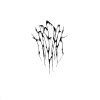 Following his brilliant stoner rock by way of minimalist compositions album The Invisible Mountain, Horseback’s Jenks Miller has delivered another release of carefully calculated minimalism in the old school vein, but here with a bit more of a noise and shoegaze sense.
Following his brilliant stoner rock by way of minimalist compositions album The Invisible Mountain, Horseback’s Jenks Miller has delivered another release of carefully calculated minimalism in the old school vein, but here with a bit more of a noise and shoegaze sense.
"MILH" throws out a raw guitar feedback squall over a simple, yet effective descending guitar melody. It is a similar structure to the full length, marrying the subtle melody with the harsher noisy stuff. Death metal type growl vocals do make an appearance, but in a subtle way that doesn’t clash with the Stoic structure. The dynamic vocals balance out the static melody well, and the entire track has a harsh noise edge to it.
"IHVH" gives the vocals a bit more of the spotlight, but shuns the melody for the sake of shimmering guitar noise and a monotone drum machine rhythm. It isn’t’ quite as calculatedly minimal, and has more of a dynamic, noise infused metal vibe to it.
Miller is definitively cultivating his own sound with Horseback, but it’s especially good to hear him trying variations of a theme. Not many folks would try and mix Charlemagne Palestine and Emperor, with just a smidge of My Bloody Valentine and Skullflower, but that’s what this single is doing.
Read More
- Creaig Dunton
- Albums and Singles
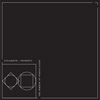 Both artists on this brief 7" are going in directions that are perhaps unexpected with their sound, and that’s for the best. The Stillbirth track mixes elements of traditional noise and bits of music, while Prurient’s work is an electro-acoustic collage with some overt synth work that’s not far from something that’d be heard from his work in Cold Cave.
Both artists on this brief 7" are going in directions that are perhaps unexpected with their sound, and that’s for the best. The Stillbirth track mixes elements of traditional noise and bits of music, while Prurient’s work is an electro-acoustic collage with some overt synth work that’s not far from something that’d be heard from his work in Cold Cave.
The Stillbirth track, "The View Untangled" opens with slow, menacing vibrations that are coupled with cutting shards of distorted noise. However, there is the occasional fragment of what sounds like an organ arising from the mist, and pieces of shortwave radio transmissions that are obvious, but just a bit too out of focus to be comprehended.
Dom Fernow’s "Where Secrets are Guarded" begins with rudimentary synth sequences that could be on a much more "pop" friendly track, but when mixed with the abstract rattling percussion and wavering tempo it won’t be on the soundtrack to any teen-oriented TV show this fall. The addition of the pained, moaning vocals and calm, lightly processed spoken word material keeps it in Prurient territory, though definitively in the more sparse, reflective category.
Clocking in at barely over six minutes, this split is a bit shorter than it should be, because it is a great example of two artists refining their own styles and expanding the boundaries of noise as more than just chains of distortion pedals and misogyny.
Read More
- Administrator
- Albums and Singles
 A new album from Lisa Germano is always a noteworthy event, as each of her periodic hiatuses has threatened to be a permanent one. Magic Neighbor, Lisa's first new album in three years, shows that an evolution has been occurring during her recent silence: an unexpected amount of light is now filtering into her creaky, melancholy, and decayed little sonic snow globes. This shift in direction, however, is still in a bit of an awkward stage.
A new album from Lisa Germano is always a noteworthy event, as each of her periodic hiatuses has threatened to be a permanent one. Magic Neighbor, Lisa's first new album in three years, shows that an evolution has been occurring during her recent silence: an unexpected amount of light is now filtering into her creaky, melancholy, and decayed little sonic snow globes. This shift in direction, however, is still in a bit of an awkward stage.
In Michael Gira’s description of Magic Neighbor, he mentions that it reminds him of early Disney songs. Despite my longstanding love of Germano's work and my intense antipathy towards all things Disney, I have to agree with him a bit. This album seems like it could have been a soundtrack to a movie (perhaps about a very sensitive and lonely unicorn) that had to be scrapped because the music made all the children in the focus groups cry. This odd association is largely rooted in Lisa’s conspicuous new divergence from traditional pop song structures, as many of the songs here do not follow a regimented verse/chorus trajectory. Instead, chorus-like interludes seem to burst forth from Lisa’s murky, baroque, and eerily carnival-esque ballads at seemingly arbitrary and unexpected times.
Of course, all of the things that make Germano such an endearing and idiosyncratic artist are still here: touchingly melancholy and smoky vocals, gauzy and dreamlike production, sprightly pianos tinged with sadness, and beautifully arranged strings. However, there are also several new elements that don’t quite work seamlessly yet, such as a propensity for plunging into cheery major key passages and the aforementioned diffuse structure. Also, Magic Neighbor suffers a bit from a lack of characteristic bite, dark humor, and nocturnal surrealism (though both “Suli-mon” and the title song get a bit mind-bending at times). The songs that work best are those that remain most firmly rooted in her past work, such as “The Prince of Plati” and the aching, wistful “Snow.” Much of the remainder of this rather brief album has the feel of a drifting series of interludes, so individual tracks don’t stand out much. It is rare for an artist's work to become less accessible at the same time that it becomes less emotionally uncomfortable, but that is exactly what has happened here.
Magic Neighbor is an intriguing and generally pleasant experiment, but there is nothing here besides “Snow” that comes close to standing with her best material (I don’t think I have been let down by one of her albums since 1996’s Excerpts From A Love Circus). Nevertheless, I am pleased and relieved that she is still writing new songs and straining to expand her sound into something new. Her previous work always felt like an ephemeral and unsettlingly intimate glimpse into the edges of a very dark and weird place, but it seems like that place has become quite a bit brighter as of late.
samples:
Read More
- Administrator
- Albums and Singles
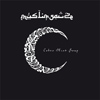 The Tupac Shakur of dissonant Islamic dub, death hasn’t slowed down Bryn Jones, who has still been prolific for over a decade after he passed away. The 11 tracks on this LP and 12" set are all from his most prolific period in 1997. Unsurprisingly, this is Muslimgauze by the numbers that does nothing drastically different or innovative than the slew of other releases from the era, and thus is really only recommendable for hardcore zealots and the dabbler who hasn't picked up an album from Jones in awhile.
The Tupac Shakur of dissonant Islamic dub, death hasn’t slowed down Bryn Jones, who has still been prolific for over a decade after he passed away. The 11 tracks on this LP and 12" set are all from his most prolific period in 1997. Unsurprisingly, this is Muslimgauze by the numbers that does nothing drastically different or innovative than the slew of other releases from the era, and thus is really only recommendable for hardcore zealots and the dabbler who hasn't picked up an album from Jones in awhile.
The first of the two heavy slabs of vinyl in here is the actual LP, and it opens with "Muslim Brotherhood," which is undeniably Muslimgauze with its fuzzed out tablas, tortured violins, and low, dubby bass that can work a subwoofer over something proper. And it wouldn’t be Muslimgauze without a sizable portion of random tape stops and stutters. "Kashmiri Queens" is similar with its tapes of Middle Eastern horns and skittering fragments of rhythm.
The title track is a more complex mish-mash of hip-hop beats, rattlesnake hisses, and bizarre blips, and "Rabid Zionist Dog Muzzle" also brings the rhythm in the form of heavily distorted electronic drums and random sound collages. "Dogheadgod" also showcases a wonderful steady rhythm that is complimented by a slow, heavy bass line that rivals anything from most dub recordings in the past 20 years.
The two tracks on the 12" that is included are a bit more varied, but again, nothing that is going to shock or amaze. "Elect Izlamic Jihad" is all pegged out to the point of clipping drums, echoed beeps, and fragments of voice that have more of a layered, collage feel to them. On the flip side, "Dimple Kapadia Mumbai" (I think I got an email with that subject line selling me penis pills the other day) has a thick grimy layer of vinyl surface noise atop the usual beats and voice samples.
Unfortunately the most captivating tracks are simply too short. "Zion Junkie," for example, has a locked steady rhythm and junk percussion that just has a different feel to it from the usual distortion and tablas. "Gaza Strip" also goes a bit off on its own tangent, with cut up harmonica and pots & pans percussion, and field recordings mixed together to unique effect.
It’s not fair to expect any drastic developments or variations on this sort of archival recording, but Cobra Head Soup is sonically interchangeable with so many other albums from Jones. It is not a bad release by any means, but the casual fan (such as myself) wouldn’t be doing themselves a disservice by passing on it.
samples:
Read More
- Administrator
- Albums and Singles
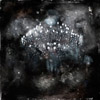 An appropriate coda for the URSK series on Utech, the slew of drone oriented releases from both established (Skullflower, Final) and the up and coming (Aluk Todolo, RST) ends with a new project featuring visual artist Steven Kasner (the SK of URSK) and collaborators including Yoshiko Ohara (Bloody Panda) clashes ethereal and oppressive dynamics to maximum effectiveness.
An appropriate coda for the URSK series on Utech, the slew of drone oriented releases from both established (Skullflower, Final) and the up and coming (Aluk Todolo, RST) ends with a new project featuring visual artist Steven Kasner (the SK of URSK) and collaborators including Yoshiko Ohara (Bloody Panda) clashes ethereal and oppressive dynamics to maximum effectiveness.
While the prior works in this series had been largely focused on the more bleak and dark sounds, this work lets in a bit more of the light that had been otherwise obscured over time. The disc opens and closes with tracks that focus on light ambient ethereal sounds that on their own are rather beautiful, but take on an entirely different quality given the distant, haunting vocals of Ohara, sounding like a spirit channeling from other worlds.
Both "Head Found in Aptos" and "Spiritless" mix the dark vocals with heavier guitar riffs that infringe upon metal territory, but are only one part of a much more diverse compositions. The former combines heavier guitar with more ambient riffs, ending with layers of string-like textures. The latter is longer and mixes softer electronics with the deeper metal riffs, but eventually slipping away to reveal unabashedly beautiful tones to conclude the track.
The remaining tracks pull some of the darker layers away to focus on the more ethereal elements. "White Wax Blood" has subtle low frequency elements but gentle, chiming guitar notes that are much more 4AD than Southern Lord. The creepy, dissonant vocals remain, but the other elements of the track overshadow the darkness. Even the occasional dank basement from hell low end doesn’t drag the track downward. "Hemming" mixes gentle guitar strums, backward notes, and light synth work with some more obscure, sinister elements. It’s a disparate combination of sounds that manages to actually come together beautifully.
The closing "Picture of Time and Space/Out" strips everything down to simply the vocals of Ohara and some treatments of them, mixing heavily effected vocals with the pure ones, ending the album (and series) with some sense of closure, as isolated and frozen as it may sound.
Like the Arc series that preceded it, the URSK series of albums curated by Keith Utech has assembled various practitioners of dark, droning sound to wonderful effect, with the known artists doing some of their best work, while aiding in the younger folks getting a bit more attention. Stephen Kasner’s visual art that accompanied each of these releases have been the perfect metaphor as well: dark, grimy paintings, but small fragments of light escaping describes the sound of most of these albums, but this one especially. It is a haunting finish to a memorable set of albums.
samples:
Read More
- Administrator
- Albums and Singles
 Kristin's principled self-emancipation from record labels seems to have had a noticeably invigorating effect on her work, as Speedbath features some of her strongest songs in recent memory. Notably, Hersh's newfound career optimism has not infected her songwriting one bit: these 12 songs brood and bristle with characteristic dark intensity (even more so than usual, actually).
Kristin's principled self-emancipation from record labels seems to have had a noticeably invigorating effect on her work, as Speedbath features some of her strongest songs in recent memory. Notably, Hersh's newfound career optimism has not infected her songwriting one bit: these 12 songs brood and bristle with characteristic dark intensity (even more so than usual, actually).
Coalition of Artists & Share Holders (CASH)
Speedbath gradually came into being as a pay-what-you-like series of downloads in which Hersh posted one song each month for a year (with accompanying artwork and some background about each song’s conception). Complete creative freedom can be an intimidating environment to thrive in, but Kristin has clearly been quite fertile. Always a uniquely human artist, the success or failure of her past work has historically been heavily reliant on how much passion and enthusiasm has been poured into it and how much her raw charisma has been smothered or smoothed-over by slick production. Speedbath, happily, is one of the more soul-baring and undiluted albums of her career.
The album begins quite strongly, as “Slippershell” and “Torque” seethe with conviction and rueful catharsis. The haunting third song, “Around Dusk,” however, is a stone-cold career highlight. The delicate acoustic guitars are beautiful, the quivering electric guitars are perfectly placed, the vocals are mesmerizing, the backing vocals are haunting, and the lyrics are darkly poetic (“throw your arms around me, wrapping the night in ugly harmony”). The fragile and hazy “Elizabeth June” (about a departed friend) is another stunner, as is the title track, with its vaguely Latin percussion and scathing chorus of “and you were so goddamn cold.” In fact, there is very little that can be considered weak here, as even the lesser tracks often yield some striking moments or particularly inspired lyrics. Hersh has not sounded this vital in a while and seems to be only getting better as a lyricist.
My only minor quibble is that Speedbath is a bit too rooted in contemporary indie rock sounds and textures for my liking. Obviously, it makes sense, given Hersh’s previous work as a Throwing Muse, but it fixes her songs very firmly in a time period. Her folkier, more acoustic outings (like Murder, Misery, and Then Goodnight or the beloved Hips and Makers album) still sound fresh many years later. Several songs on Speedbath, however, have a definite “sell by” date for varying reasons (the pseudo-trip hop drums in “Around Dusk” are one example, the fuzzy guitars in the chorus of “Slippershell” are another). Catchy beats and distorted guitars certainly make songs more rocking and immediately gratifying, but Kristin at her best is intense enough to be compelling without such crutches.
samples:
Read More
- Administrator
- Albums and Singles
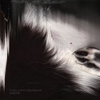 In 2007, To Kill A Petty Bourgeoisie began their first album on Kranky with a shriek of piercing noise. The album that followed was layered with dirty rhythms and walls of sound that were as dense and deformed as they were pretty. On Marlone, Mark McGee and Jehna Wilhelm have opened up their sound and, as a result, crafted a spacious and sprawling album far more dynamic and layered than their debut.
In 2007, To Kill A Petty Bourgeoisie began their first album on Kranky with a shriek of piercing noise. The album that followed was layered with dirty rhythms and walls of sound that were as dense and deformed as they were pretty. On Marlone, Mark McGee and Jehna Wilhelm have opened up their sound and, as a result, crafted a spacious and sprawling album far more dynamic and layered than their debut.
"You've Gone Too Far" might as well be the mantra Mark and Jenha worked from while recording Marlone. The Patron wasn't exactly an extravagant album, however the latest from this Minneapolis based duo is far more concerned with restraint and economy than its predecessor was. The aforementioned opening song builds and develops slowly, putting numerous textures and Jenha's lovely vocals to good use. Wilhelm's voice is, in fact, the single most important instrument on the album and also one of the most diverse. Without her, certain songs would fall apart or simply dissolve before they could evolve. On the other hand, her sometimes haunting melodies wouldn't sound nearly as impressive as they do if it weren't for Mark's churning blend of guitar, bass, violin, and drums. Blasts of noise aren't quite as important this time around as continuity and thick-as-a-brick atmospheres are, but waves of feedback, drone, and distortion still play a significant role on nearly every song. If nothing else, Marlone is a further refinement of the music we heard on The Patron, but there are places where To Kill A Petty Bourgeoisie have altered their sound more radically and produced music far richer than anything from their past. Those moments are Marlone's defining ones. While some of the album proceeds at the same patient pace as past efforts, the band frequently ventures off into new territory with exotic and more exciting results.
"The Needle" is the first sign that TKAPB are ready to travel beyond their comfort zone. After "You've Gone Too Far" fades away, a pulsing keyboard melody and a thumping drum set emerge from the silence like a predator hunting down frightened prey. But this pace doesn't last long and the song quickly segues into a drift of low-end melody and Jenha's airy voice. Splashes of percussion and metallic noise swirl about her like a threatening presence, but they only break free and scream toward the end of the song. Even then, the name of the game is impressionism: Mark and Jenha's music breathes and hisses more than it punches or attacks. The upbeat, nearly dancey rhythm promised at the beginning of "The Needle" doesn't show up again until six songs later, when "In Peoples' Homes" kicks the album into serious overdrive. In the interim songs develop throbbing rhythms, but they all move in unison like a blob. Even where sharp rhythms are distinctly heard, McGee's production overtakes them with blends of melody, string textures, organic noise, and big doomy blasts of bass drums and cymbals. At times this combo manifests a romantic tone, but a kind of barren dread can be felt throughout the record, too. It's as if Mark and Jenha were performing from the other side of the apocalypse.
Still, whispers of hope and even happiness are implied on the album, as in the conclusion to "I Will Hang My Cape in Your Closet." For nearly three minutes TKAPB prepare to take off and soar into the heavens, readying themselves to escape the dark and dimly lit world in which they have always lived. Of course, this preparation is summarily erased by an eerie transition and a giant, almost mechanical blast of distortion and martial rhythm. Because an uncanny mood dominates much of the record, a sense of monotony marks parts of the record. It takes four whole songs and part of a fifth for McGee and Wilhelm to break out of their mold and produce something with a little pep to it. This could be read as a mark of dedication and consistency, but Mark and Jenha blend their influences so well that I think more variety could've enhanced the album.
Happily, "In Peoples' Homes" explodes near the end of the album and delivers a much needed surge of strong melody and succinct songwriting. Where previous songs either relied upon Jenha alone for melodic content or shared melodic duties among various instruments at various times, "In Peoples' Homes" puts all the cards on the table at once. It is the closest the band has come to writing a pop song and its rather upbeat performance is a show stealer. The first time through, it was the most shocking thing on the album. Its yearning violin line and Jenha's playful vocals contrast sharply the sludge and droney mass that makes up the rest of the album. Upon repeat listens it isn't quite so shocking; its place on the record makes good sense and marks one of the album's highest peaks. And though its violins, acoustic drums, and clean guitar lines make for a more open sound, Marlone still shows off a dense attitude. One of the band's defining attributes is its willingness to move at a glacial pace; "Turritopsis" and "Summertime" are perfect examples of this. Big, chunky strokes of sound define both songs, which mix McGee's love for noise with major chords and an altogether bright production. Without a doubt, this is a far less destructive record than The Patron. It's also more diverse and, for that reason, a more pleasing record.
By shedding some of the darkness surrounding them, TKAPB have crafted an album with as much light to it as darkness. This lends Marlone a romantic tone, maybe even a tragic one. In any case, the freedom realized in incorporating further pop elements into their sound is significant. It both contrasts their typically intense and cinematic vision and provides it with some much welcomed depth. Without it, Marlone wouldn't be the big step forward that it is.
It is worth noting that the copy of Marlone I received has some regretably blurry text settled among the already dark artwork. I understand that black and grey make an attractive couple, but reading the song titles and the contributor's names in the liner notes was far more difficult than it should be. This is maybe a minor complaint, but it would be nice if I didn't have to strain my eyes to figure out who engineered the album and provided the artwork!
samples:
Read More
- Administrator
- Albums and Singles
 Miss Autopsy shares a lot of common ground with early Mountain Goats, such as uncomfortably raw vocals and a tendency towards rather wordy narrative lyrics. However, Steve Beyerink has something that John Darnielle does not: a singular propensity for squirm-inducingly soul-baring misanthropy and pessimism that precludes absolutely any possibility of widespread acceptance. While certainly somewhat flawed, this album is not an easy one to forget.
Miss Autopsy shares a lot of common ground with early Mountain Goats, such as uncomfortably raw vocals and a tendency towards rather wordy narrative lyrics. However, Steve Beyerink has something that John Darnielle does not: a singular propensity for squirm-inducingly soul-baring misanthropy and pessimism that precludes absolutely any possibility of widespread acceptance. While certainly somewhat flawed, this album is not an easy one to forget.
Chicago’s Miss Autopsy began as a solo bedroom recording project in 2003 but gradually blossomed into a full band…and is now back to being just Beyerink. It's probably better that way as other musicians would only dilute his lonely, black-hearted vision. That said, Steve does not radically depart from Miss Autopsy's past formula of creepy, unsettling lyrics and dark, blues-influenced indie rock/post punk. Instead, he seems to have focused on doing the same thing as always, but better.
The presence of other musicians is not missed. Significantly, Steve’s vocals and deliberately blunt, disturbing lyrics are so central that the surrounding music is almost irrelevant: Caterpillar would likely be even more compelling if it was reduced to just the vocal track. While decent and certainly functional, the underlying music rarely threatens to overshadow the vocals (aside from the excellent jagged guitar solo that concludes “That Fighting Spirit” and the sloppy, yet cathartic, shredding in the title track). That is not to say that Steve is an infallible vocalist, however: he can be a bit clumsy and over-the-top at times. In fact, some songs would be unintentionally comical if the lyrics weren’t delivered with such unwaveringly grim conviction (like the opener, “Jonathan”). Other times, it seems like Steve is being intentionally funny: the opening verse of “Caterpillar,” in which he discusses murdering the friendly titular Lepidoptera in his garden, seems like it can only be deliberate self-parody. Probably, anyway. Regardless, he’s a scary guy. There are a times when he approaches being a hookier, more conventionally musical Jandek.
When Beyerink gets it right the results are often gripping, immediate, and incendiary in a way that few other performers can approach (perhaps because there is no superfluous artifice or polish). The breathlessly sociopathic “Dead Loner Blues” and the nakedly cathartic crescendo of “Caterpillar” stand out as especially stunning in an already impressive batch of songs. The true centerpiece, however, is “The Wildlife Refuge.” Nobody else could turn a spoken recollection of a nocturnal trip into one of the most mesmerizing and haunting pieces of music that I've heard in a while (“Instantly, in comes a stench. It smelled like crystal meth and murder.”). I’m sure I will probably read about this guy committing a spectacular suicide on stage some day, but until then I will be enthusiastically awaiting each new dispatch from his irrevocably twisted head. Inconsistency and occasional conspicuous missteps are necessary consequences when you’re chasing brilliance with no filter or artistic detachment.
Samples:
Read More
- Administrator
- Albums and Singles
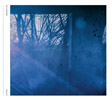 While many artists use the sonic medium as a canvas to paint imaginary journeys conceptually through sound and instrumentation, this Australian duo takes the concept to a more literal point by utilizing recordings of actual events and elements referenced in the track titles in addition to traditional instrumentation. The result is a wonderfully dark, post-rock tinged trip that shows the 12k label is at the cusp of more than just laptop programming and art installation sounds.
While many artists use the sonic medium as a canvas to paint imaginary journeys conceptually through sound and instrumentation, this Australian duo takes the concept to a more literal point by utilizing recordings of actual events and elements referenced in the track titles in addition to traditional instrumentation. The result is a wonderfully dark, post-rock tinged trip that shows the 12k label is at the cusp of more than just laptop programming and art installation sounds.
The opening "Ablation" uses the actual sounds of ice and wind to create a murky atmosphere that sounds like rattling engines and running water, never clearly identifiable at first, but familiar and organic. Later in the track some untreated cello and piano arise, starkly contrasting the "known" instruments with the "unknown" ambience. "Hydraulic Fluctuations" (based on fluid fluctuations recorded inside a large pump) has some more overt filtered water noises, but also a clattering percussive part that sounds like rocks rattling together, along with some deep, rich stringed instrument tones. The mix is thick and dense, and far from the minimalism one might expect.
"Canal Rocks" features a field recording of wind through a small rocky alcove in Australia, which is contrasted with a gentle, hovering melody. As the track goes on, the lighter moments are supplanted by the deeper, dense textures. "Beyond This Window" opens with shimmering feedback like tones and understated strings that focus more on the musical rather than environmental end of the sound spectrum, though the calming rush of a rainstorm keeps things rooted in nature.
The low end rumbles and echoed reverberations "In The Light Storming" uses obviously resemble a violent storm, the sound creeping into textures that have a vaguely early industrial vibe to them. However, the sound is never oppressively dark or violent, and instead the sun shines through at the end to reveal bits of pure, untouched ambience. "Look For Me Here" (also available as a CD single with remixes by Ryuichi Sakamoto and Giuseppe Ielasi) is the closest thing to being overt "post-rock" with its distant pings and pulses, rattling fuzz and swells of orchestral like tones. Glistening chimes and hammered guitar notes sit above of filtered noise that nicely compliments the more traditionally beautiful moments.
The final two tracks of this journey are much more dark and sinister than the rest. "Loom" is an appropriate title for a piece of humming ominous strings and dark, growling like textures. Cello, guitar and other strings provide a more familiar reference point to the otherwise murky mire, but even they alternate between a melancholy drone and a violent, panicked pace. The long closer, "Woods Flesh Bone," is another literally titled track. Consisting of field recordings that can only be described as "wet," the sound is amplified by flies buzzing all around (based on field recordings of a chicken carcass), and an eerie calm, punctuated by birds far away. The sound of dark isolation grows worse as the synthetic elements become more pronounced as the track winds down, leading to a dark, bleak foreboding sound that is one of the best examples of how to aurally represent decay. Rather than the journey ending happily, it instead finishes on a bleak, sinister note.
Each piece functions on its own as a microcosm of organic sound although all are thematically linked, expertly mixing untouched field recordings, treated sounds, and traditional instrumentation into a work that sounds decidedly natural, yet completely mysterious. It is the kind of album that begs to be replayed not just because of its inherent strength, but also because of its variation and complexity.
samples:
Read More
- Administrator
- Albums and Singles
 With these two being recorded in 2008, it is not surprising that these two LPs from this solo project have a similar sound and vibe to them, though both do go in somewhat different directions, with Psychosis focusing on the droning slow space rock material, while Night Flights opens the sonic pallet up to include more than just guitar and bass, but primitive analog electronics as well. They both definitely take minimalist droning guitar into a more astral plane than usual, however.
With these two being recorded in 2008, it is not surprising that these two LPs from this solo project have a similar sound and vibe to them, though both do go in somewhat different directions, with Psychosis focusing on the droning slow space rock material, while Night Flights opens the sonic pallet up to include more than just guitar and bass, but primitive analog electronics as well. They both definitely take minimalist droning guitar into a more astral plane than usual, however.
Psychosis is actually two side-long tracks, "Sleeping Corpse" and "Widow Planet," that are each broken into three shorter pieces. The former suite is somewhat lighter and ambient while the latter crosses the line into darker drone territory. "Into Body," the first part of "Sleeping Corpse," begins with deep undulating bass drones and echo chamber guitar scrapes. The low end gets pushed into noise territory while the guitar scrapes eventually morph into more prog-rock like soloing. The overt guitar playing reappears in "Cold Forecasting," where it begins as simple two chord rhythms but shifts into pure soloing that is a bit reminiscent of Earth’s recent blues/country infused sound, though here it is in addition to a noise driven backing.
"Left to Die," the opening movement of "Widow Planet," has a more traditional organic guitar ambient sound with a hint of dubby bass that puts it in league with Main circa Motion Pool: it has a looped sound that is depressive and dark. The style continues into "Stark Bleakness Rising," which pulls away the bass and instead showcases slow, repeated guitar riffs with some more guitar soloing on top. The closing "Haunting the Terrain" goes even farther into sonic space, having a more traditional dark ambient/industrial influenced sound that still shows exceptional analog warmth while keeping the conventional guitar sound at bay.
Night Flights, on the other hand, is four distinct tracks that expand the instrumental repertoire. "Transcending Energy from Light" has a distinct Moog pulse with the occasional perceptible guitar note and high frequency vacuum cleaner shriek. The sound ends up in a swirly psychedelic vortex with only the occasional noisy synth stab or clear guitar note escaping. "Alpestrine Fog" keeps the low end synth pulse but with warmer guitar tones that are a bit more inviting and less space-y than the previous one.
"Cognac Smoke" is probably the most dynamic track of both LPs, which actually has some rhythmic movement due to the old school Suicide-esque analog drum machine that propels the pitch bent guitar noises and bird-call like shrieks along. The closing “Seismic Nuances” recalls the looped guitar chaos, with proggy guitar solos to distinguish it.
With the guitar based drone sound staying popular, more and more artists need to carve out their own niche to simply not get lost among the detuned chords and sustain pedals. Expo ’70 does so by adding that liberal dash of '60s psych and '90s dark ambience to the fray. While there are the occasional bits of sameness within each album, as a whole they are a good mix of the familiar and new.
samples (Psychosis):
samples (Night Flights):
Read More
- Creaig Dunton
- Albums and Singles
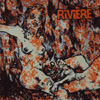 For its maiden release, the new Staalplaat sublabel Le Petit Mignon has issued this clear little 7" in gaudy, bright packaging with each of the artists tackling a side. Between Chessex (Monno) abusing his saxophone and Riviere (Textile Orchestra) destroying an electrophone, the results is a precious few minutes of pure sonic destruction.
For its maiden release, the new Staalplaat sublabel Le Petit Mignon has issued this clear little 7" in gaudy, bright packaging with each of the artists tackling a side. Between Chessex (Monno) abusing his saxophone and Riviere (Textile Orchestra) destroying an electrophone, the results is a precious few minutes of pure sonic destruction.
Chessex’s “Power, Stupidity & Ignorance” is a rapid-fire blast of harsh noise, with a dynamic flow that puts it in league with the old school cats like Masonna and Government Alpha. However, considering that the tenor sax that makes up the core sound here occasionally swells to the surface, it resembles more of a clusterfuck free jazz take on harsh noise than anything a horn could normally do.
On the flip side, Arnaud Riviere’s “Queen Queen Banda Drive” is a lo-fi piece of sonic detritus that is obviously very intentionally recorded in the worst way possible. It’s a parade of metallic crashes that occasionally locks into a semblance of rhythm, but more often than not sounds like a microphone in a metal oil drum being rolled down a hill and run through a few pedals.
The fact that this is a short release is what makes it successful. Either track would seem to drone on for a bit too long and lose some of the visceral impact that is allotted by limiting each artist to a few minutes. It’s a nice, jagged listening experience.
Read More

